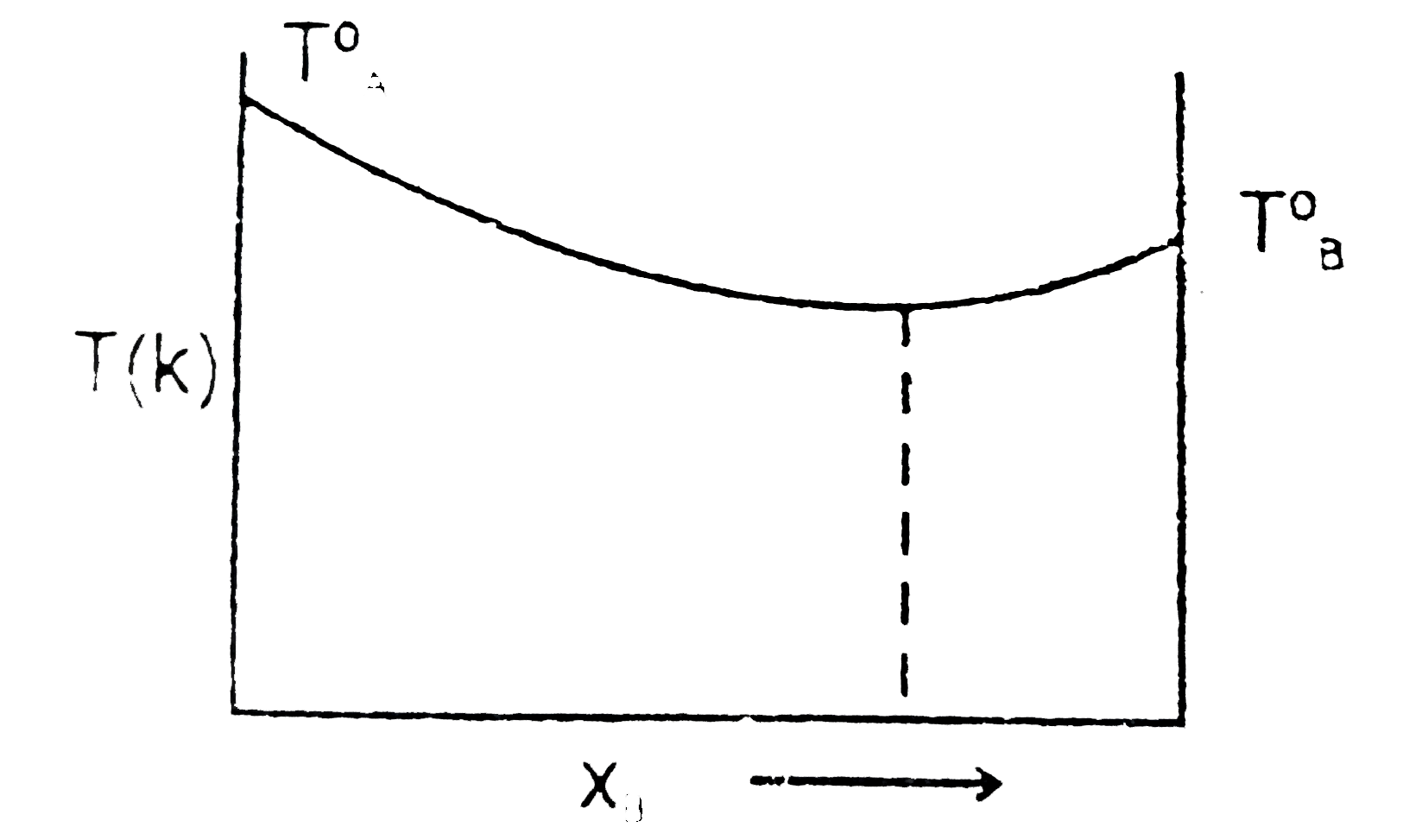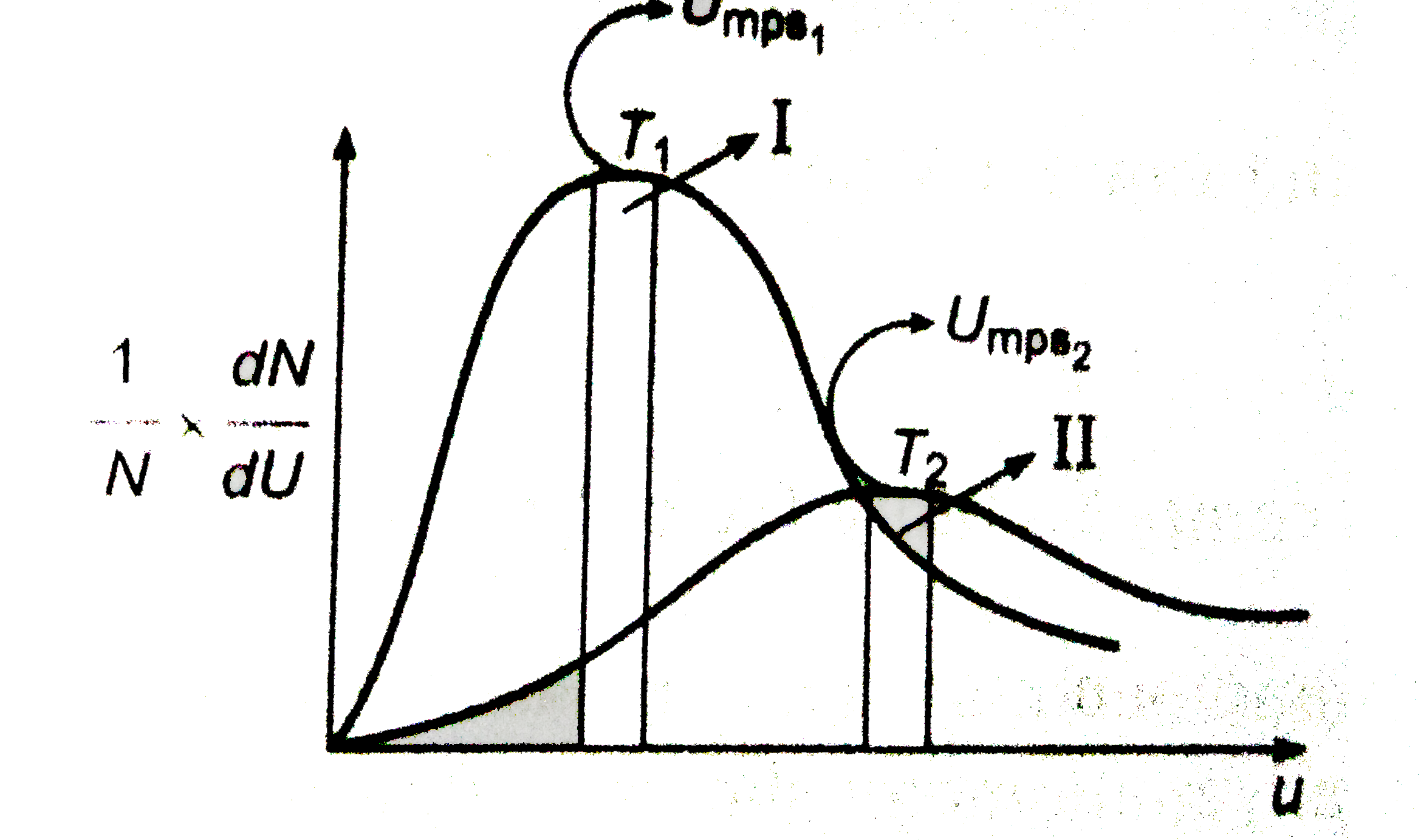For an ideal solution of two components A and B, which of the following is true?
(zero)
and interations ae identical
interaction is stronger than and interactions
(zero)
The correct Answer is:B
To solve the question regarding the characteristics of an ideal solution of two components A and B, we will analyze the properties of ideal solutions step by step.
1. Understanding Ideal Solutions:
- An ideal solution is a mixture of two or more components that behaves according to Raoult's law. In an ideal solution, the interactions between the molecules of different components are similar to the interactions between the molecules of the same component.
2. Key Characteristics of Ideal Solutions:
- The interaction energy between A and A (AA), B and B (BB), and A and B (AB) are equal.
- The change in enthalpy (ΔH) of mixing is zero, meaning no heat is absorbed or released when the components are mixed.
- The change in volume (ΔV) of mixing is also zero, indicating that the total volume of the solution is the sum of the volumes of the individual components.
3. Analyzing the Options:
- Option A: "ΔH of mixing is less than zero."
- This is incorrect for ideal solutions; it indicates a negative deviation, which is characteristic of non-ideal solutions.
- Option B: "AA and BB interactions are identical to AB interactions."
- This is correct. In an ideal solution, the interactions between the same components (AA and BB) are equal to the interactions between different components (AB).
- Option C: "AB interaction is stronger than AA and BB interaction."
- This is incorrect; stronger AB interactions indicate a positive deviation from ideal behavior.
- Option D: "ΔH of mixing is greater than zero."
- This is also incorrect for ideal solutions; it suggests a positive deviation.
4. Conclusion:
- The correct statement regarding an ideal solution of two components A and B is that the interactions between A and A, B and B, and A and B are identical. Therefore, the correct answer is Option B.
- An ideal solution is a mixture of two or more components that behaves according to Raoult's law. In an ideal solution, the interactions between the molecules of different components are similar to the interactions between the molecules of the same component.
- The interaction energy between A and A (AA), B and B (BB), and A and B (AB) are equal.
- The change in enthalpy (ΔH) of mixing is zero, meaning no heat is absorbed or released when the components are mixed.
- The change in volume (ΔV) of mixing is also zero, indicating that the total volume of the solution is the sum of the volumes of the individual components.
- Option A: "ΔH of mixing is less than zero."
- This is incorrect for ideal solutions; it indicates a negative deviation, which is characteristic of non-ideal solutions.
- Option B: "AA and BB interactions are identical to AB interactions."
- This is correct. In an ideal solution, the interactions between the same components (AA and BB) are equal to the interactions between different components (AB).
- Option C: "AB interaction is stronger than AA and BB interaction."
- This is incorrect; stronger AB interactions indicate a positive deviation from ideal behavior.
- Option D: "ΔH of mixing is greater than zero."
- This is also incorrect for ideal solutions; it suggests a positive deviation.
- The correct statement regarding an ideal solution of two components A and B is that the interactions between A and A, B and B, and A and B are identical. Therefore, the correct answer is Option B.
Topper's Solved these Questions
- SOLUTIONSBOOK - ALLENCHAPTER - SOLUTIONSEXERCISE - EXERCISE -05 [B]
22 Videos
- SOLUTIONSBOOK - ALLENCHAPTER - SOLUTIONSEXERCISE - EXERCISE-04 [B]
20 Videos
- S-BLOCK ELEMENTS BOOK - ALLENCHAPTER - S-BLOCK ELEMENTS EXERCISE - EXERCISE -3
1 Videos
- Some Basic Concepts of Chemistry (Mole concept)BOOK - ALLENCHAPTER - Some Basic Concepts of Chemistry (Mole concept)EXERCISE - All Questions
39 Videos
Similar Questions
Knowledge Check
For an ideal solution with PA>PB , which of the following is true ?
A(xA)liquid=(XA)vapourB(xA)liquid>(XA)vapourC(xA)liquid<(XA)vapourD(xA)liquid and (XA)vapour do not bear any relationship with each other
If AB=A and BA=B then which of the following is/are true ?
View SolutionThe diagram given below represents boiling point composition diagram of solution of component A and B, which is/are incorrect among the following?

View SolutionFor non ideal solution (positive deviation) which of the following
is/are correct?
View SolutionFor an ideal solution containing a nonvolatile solute, which of the following expression represents the vapour pressure of the solute ? (x1→ mole fraction of solvent)
View SolutionAn ideal solution is that which
View SolutionIf a, b, c ∈ R, then which one of the following is true:
View SolutionFollowing represents the Maxwell distribution curve for an ideal gas at two temperature T1 and T2 . Which of the following option(s) is/are true?

View Solution
